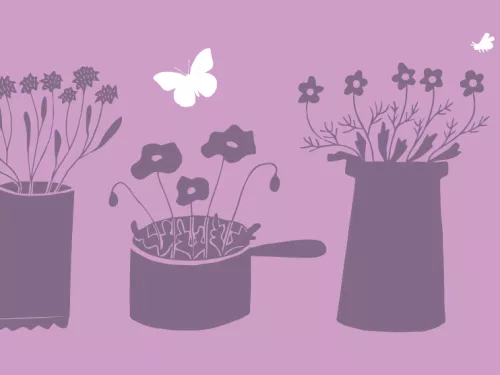
How to make a seed bomb
Plant wildflower with seed bombs!

Buy local produce, eat more plant-based foods and reduce your food miles to shrink your environmental footprint.
If all our food came from within 20km of where we live, we could save £1.2 billion every year in environmental and congestion costs. And that’s just from food shopping, what about the other products we so often fill our baskets with?
Buying locally means our products don't have to travel as far. Food products in our aisles are often transported to us via air, sea or land and the journeys use enormous amounts of fossil fuels. But it’s not just transport that can be reduced by buying local produce. The fact that food can be transported and stored more easily often means less plastic packaging is used to keep food fresh and saleable. Plastic is made of fossil fuels, and less plastic packaging means less waste getting into our seas and harming our wildlife.
Buying local often means that you'll also be buying more seasonal produce, which is often tastier too!


Plant wildflower with seed bombs!

The colder months can be a tough time for wildlife, food is scarce and hibernators are looking for shelter. That's why we’ve put together our top tips for maintaining your garden for wildlife in autumn and winter. Spoiler – some of our tips can be done…

Sending letters 'to the Editor' of local newspapers is another great way to speak up for wildife.

Learn a tradition with its roots in the Iron Age and build your own mini dry stone wall to attract wildlife.

Whether feeding the birds, or sowing a wildflower patch, setting up wildlife areas in your school makes for happier, healthier and more creative children.

Pots and containers are a great way of introducing wildlife features onto patios, or outside the front door. They are also perfect for small gardens or spaces like window ledges or roofs. Herbs, in particular, make good container plants and attract lots…